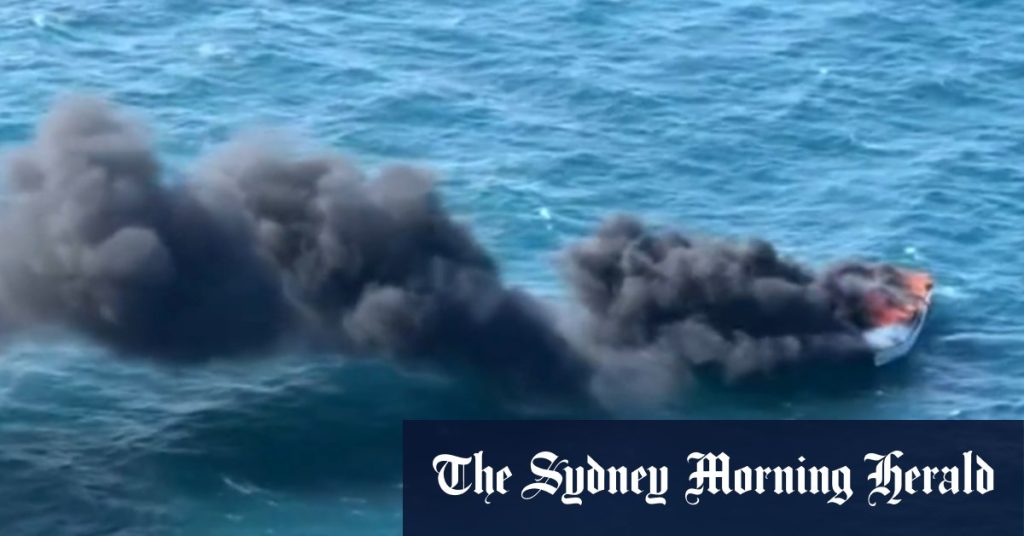Two recreational boaters were rescued off the coast of Western Australia after their vessel capsized, highlighting the importance of safety precautions and preparedness when venturing out to sea. While specific details about the incident, such as the exact location, the cause of the capsize, the type of vessel involved, and the condition of the boaters, remain unreported in the provided information, the event underscores the inherent risks associated with maritime activities. The vastness and unpredictable nature of the ocean, coupled with potential equipment malfunctions and sudden changes in weather, necessitate careful planning and adherence to safety protocols to mitigate potential dangers.
The rescue operation itself, although not explicitly detailed, likely involved a coordinated effort between maritime authorities and potentially other vessels in the vicinity. Upon receiving a distress signal or becoming aware of the capsized boat, rescuers would have initiated a search and rescue operation, employing various resources such as patrol boats, helicopters, and possibly even volunteer vessels. The swift response in locating and retrieving the boaters emphasizes the critical role of readily available emergency services and communication systems in ensuring the safety of those at sea. Factors like water temperature, sea conditions, and the time elapsed before rescue significantly impact the survival rates in such incidents, demonstrating the need for rapid and effective response mechanisms.
This incident serves as a crucial reminder for all boaters to prioritize safety measures and be equipped for unforeseen circumstances. Essential safety equipment, including life jackets, flares, a working radio, and an Emergency Position Indicating Radio Beacon (EPIRB), should be readily available and in proper working order. Furthermore, boaters should file a float plan with a trusted contact detailing their intended route, estimated time of return, and passenger information. Regularly checking weather forecasts and understanding potential hazards, like strong currents and changing tides, are also crucial steps in ensuring a safe boating experience. Developing and practicing emergency procedures, such as how to right a capsized vessel or activate an EPIRB, equips boaters with the skills and knowledge to react effectively in crisis situations.
Beyond individual preparedness, the incident highlights the importance of ongoing education and training for recreational boaters. Formal boating safety courses, offered by various organizations, provide valuable instruction on navigation, seamanship, emergency procedures, and regulatory requirements. Practical exercises, such as simulated rescue scenarios, can further enhance preparedness and build confidence in handling emergencies. Staying informed about changes in maritime regulations and best practices is also essential to ensure compliance and optimize safety measures. Participating in boating communities and sharing experiences with fellow boaters can create a valuable network for exchanging safety tips and learning from others’ experiences.
While the focus is often on individual responsibility, the incident also underscores the role of maritime authorities in promoting boating safety. Regular patrols, enforcement of safety regulations, and public awareness campaigns contribute to creating a safer boating environment. Investing in advanced search and rescue technologies and providing adequate training for rescue personnel enhances the effectiveness of emergency response efforts. Collaborating with boating organizations and community groups can facilitate targeted safety initiatives and promote a culture of safety consciousness among recreational boaters. Furthermore, analyzing incidents like this capsizing and identifying contributing factors can inform future safety regulations and preventative measures.
Ultimately, ensuring boating safety requires a multi-pronged approach involving individual responsibility, community engagement, and robust regulatory frameworks. By prioritizing safety education, adhering to best practices, and maintaining open communication channels between boaters and maritime authorities, the risks associated with recreational boating can be significantly reduced. Learning from incidents like this capsizing and continuously striving to improve safety measures will contribute to a more secure and enjoyable boating experience for everyone. The concise nature of the initial news report underscores the need for comprehensive reporting on such incidents to provide valuable insights and facilitate learning opportunities for the wider boating community. Detailed accounts, including the factors leading to the capsize, the specific rescue procedures employed, and the aftermath of the incident, would offer a more complete understanding and contribute to enhancing boating safety practices.










